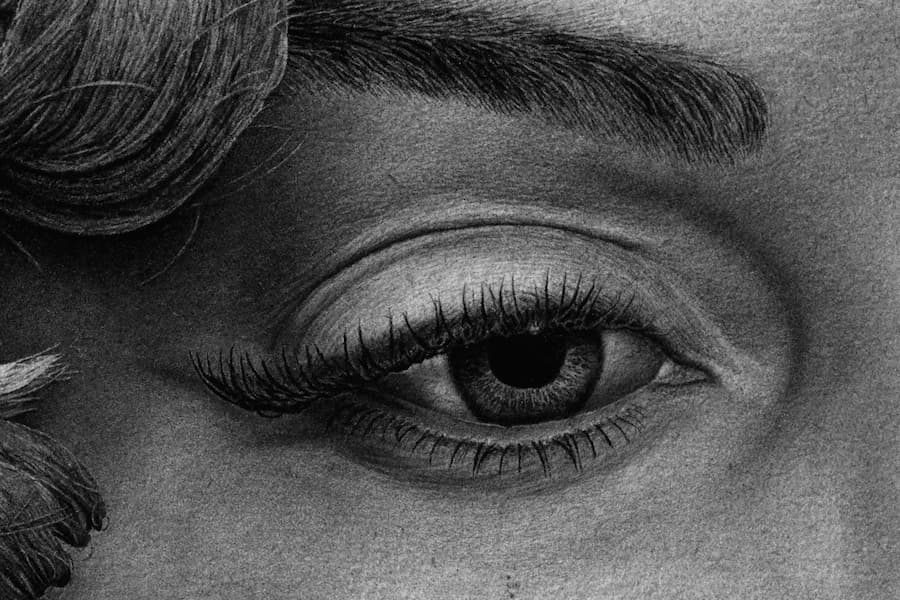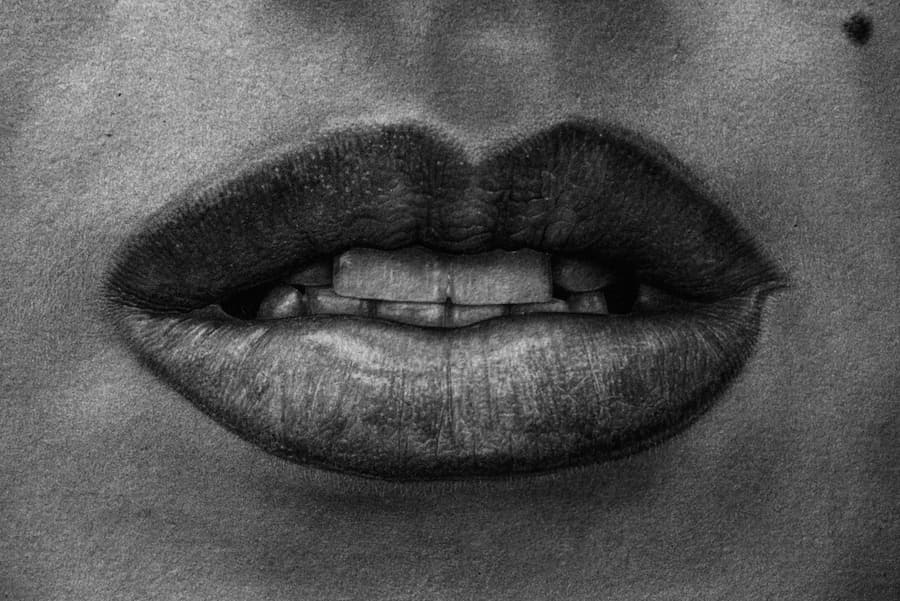You are here: American University College of Arts & Sciences American University Museum 2024 A Drawing Like No Other
Contact Us
Media Inquiries:
AU Communications
aumedia@american.edu
202-885-5950
A Drawing Like No Other:
Marilyn Brought Back to Life
in 9,000,000 MarksPresented by the Alper Initiative for Washington Art*
February 7 – May 19, 2024
Billy Pappas, Artist
Gary Vikan, Curator
Read the exhibition catalog online
Subject of an award-winning documentary, this is your chance to see this incredibly detailed pencil drawing of Marilyn Monroe in person.

Billy Pappas, Marilyn Monroe (detail), 2003. Graphite on paper; 12.79 x 16.34 inches. Courtesy of the artist. Digital image provided courtesy of William A. Christens-Barry, Chief Scientist, Equipoise Imaging, LLC.

Billy Pappas, Marilyn Monroe (detail), 2003. Graphite on paper; 12.79 x 16.34 inches. Courtesy of the artist. Digital image provided courtesy of William A. Christens-Barry, Chief Scientist, Equipoise Imaging, LLC.

Billy Pappas, Marilyn Monroe 2003. Graphite on paper; 12.79 x 16.34 inches. Courtesy of the artist. Digital image provided courtesy of William A. Christens-Barry, Chief Scientist, Equipoise Imaging, LLC.
Overview & Events
Gallery Talk: Billy Pappas, Gerrit Dou, and "Refined Minuteness"
February 17, 2:00–3:00
This exhibition is devoted to a drawing — its artist and his creative process — with a depth of resolution that guest curator Gary Vikan declares has “likely never before been achieved in the history of art.”
Its creator, Billy Pappas, set out in 1994 to create the “apotheosis of naturalistic portraiture” and establish a new standard for drawing. Billy’s point of departure was a reproduction of Richard Avedon’s famous soft-focus portrait of Marilyn Monroe from 1957.
More than eight years and nearly nine million marks later, Billy completed this extraordinary work, using nothing more elaborate than standard drawing pencils and two sets of magnifiers. The drawing’s precision and detail are so profound, its visual data so rich and deep, that it required the narrow band multi-spectral imaging techniques developed by Bill Christens-Barry for imaging of the Dead Sea Scrolls. As Charles Falco of the College of Optical Sciences at the University of Arizona remarked: “By incorporating 3-dimensional information from live models, Billy has arrived at his own solution to the fundamental limitation of the photograph.”
Learn about Billy Pappas’ creative process and the critical reception of this work, including his related encounter with David Hockney which became the subject of an award-winning documentary by Julie Checkoway, Waiting for Hockney. In his review of the film following its premiere at the 2009 Tribeca Film Festival, Ben Davis of Artnet wrote: “Pappas has clearly done something, maybe even something great — you leave the film wanting to see the work in real life.”
*About the Alper Initiative for Washington Art.
Press
Baltimore Sun - "A Baltimore artist’s masterwork finally get its moment"
